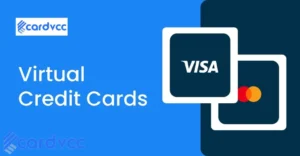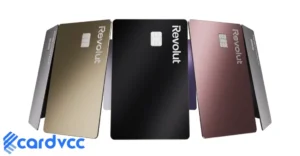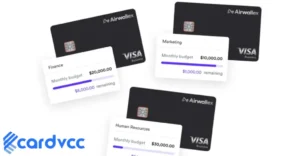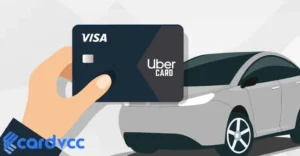To dispute a charge on your Chase debit card, contact Chase Customer Service immediately. Provide relevant transaction details to expedite the process.

Disputing a charge on your Chase debit card can be straightforward if you act promptly. As soon as you notice an unauthorized or incorrect transaction, reaching out to Chase Customer Service is crucial. Make sure you have all relevant transaction details handy, such as the transaction date, amount, and merchant information.
This will help Chase representatives quickly identify and address your issue. Swift action not only increases the likelihood of a favorable resolution but also protects your account from further unauthorized transactions. By following these steps, you can ensure that your finances remain secure and any errors are corrected efficiently.
Introduction To Charge Disputes
Understanding how to dispute a charge on your Chase debit card is vital. This guide will help you navigate the process with ease.
Importance Of Addressing Disputes
Addressing disputes quickly can save you time and stress. It ensures your financial security and keeps your account accurate.
Disputing charges protects you from fraud and errors. It also helps maintain trust with your bank.
Common Reasons For Disputes
Many reasons can lead to charge disputes. Here are some common ones:
- Unauthorized transactions
- Billing errors
- Duplicate charges
- Services not received
- Incorrect amounts charged
Let’s dive into each reason:
| Reason | Description |
|---|---|
| Unauthorized transactions | Charges made without your permission. |
| Billing errors | Incorrect details on your bill. |
| Duplicate charges | The same charge appears more than once. |
| Services not received | Paid for services but did not get them. |
| Incorrect amounts charged | Charged more or less than agreed. |
Unauthorized transactions need immediate attention. Report them as soon as possible.
Billing errors and duplicate charges are common. Review your statements regularly.
Services not received and incorrect amounts charged can happen. Always keep records of your transactions.
Identifying Unauthorized Charges
Identifying unauthorized charges on your Chase debit card is crucial. It helps protect your finances and ensures your account’s safety. In this section, we will explore how to recognize and dispute such charges effectively.
Reviewing Account Statements
Start by regularly reviewing your account statements. This simple habit can save you from financial trouble. Look for any unfamiliar transactions. Make it a routine to check your statements at least once a week.
| Task | Frequency |
|---|---|
| Check Online Statements | Weekly |
| Review Paper Statements | Monthly |
Spotting Suspicious Transactions
Spotting suspicious transactions is easier than you think. Look for small, unfamiliar charges. These can be tested by scammers.
- Unrecognized Merchant Names: Check for unfamiliar business names.
- Duplicate Charges: Look for repeated charges from the same vendor.
- Odd Locations: Watch for transactions in places you haven’t been.
If you spot anything unusual, take action immediately. Contact Chase customer service to report the issue. They can help you dispute the charge and secure your account.
- Call Chase customer service.
- Explain the suspicious transaction.
- Follow their instructions to dispute the charge.
Keeping your Chase debit card secure is essential. Regularly reviewing your statements and being vigilant about suspicious transactions can save you from potential fraud.
Gathering Necessary Information
Disputing a charge on your Chase debit card can feel overwhelming. Gathering necessary information simplifies the process. This guide helps you organize what you need.
Transaction Details
Start by collecting the transaction details. This includes:
- Transaction date
- Merchant name
- Transaction amount
You can find these details on your Chase account statement. Log in to your online account or check your paper statements. Make sure the details match your records.
Supporting Documentation
Next, gather supporting documentation. This evidence supports your dispute. Useful documents include:
- Receipts showing the correct amount
- Emails confirming order cancellations
- Screenshots of merchant communications
Organize these documents for easy access. You may need them multiple times. Keep both digital and physical copies if possible.
Here’s a quick checklist to help you:
| Item | Check |
|---|---|
| Transaction Date | ✓ |
| Merchant Name | ✓ |
| Transaction Amount | ✓ |
| Receipts | ✓ |
| Emails | ✓ |
| Screenshots | ✓ |
By gathering this information, you’re ready to dispute the charge. Stay organized and keep your records handy.
Contacting Chase Customer Service
Disputing a charge on your Chase debit card can be stressful. Contacting Chase Customer Service is a crucial step. They help resolve your issue efficiently. This section covers how to contact them and what to expect.
Available Communication Channels
Chase offers several ways to get in touch. Choose the one that suits you best.
- Phone: Call the number on the back of your card. Speak directly to a representative.
- Online Chat: Use the Chase website or mobile app for real-time assistance.
- Email: Securely send an email through your Chase online account.
- Mail: Write to Chase’s customer service address. This is slower but reliable.
What To Expect During The Call
When you call, be ready with your card details. The representative will ask for your full name, card number, and recent transactions.
They will verify your identity. This may include security questions. Be patient; this is for your safety.
Once verified, explain the disputed charge clearly. Give the date, amount, and reason for the dispute. The representative will provide a case number. Keep this for future reference.
You may be asked to provide additional documentation. This can be done via email or upload through the Chase app.
Finally, they will inform you of the next steps. This may include an investigation period. You will be updated regularly on your case status.
Filing A Charge Dispute
Disputing a charge on your Chase Debit Card can seem daunting. But Chase offers a few easy ways to file a dispute. You can do it online, or you can call customer service. Here’s how you can get started.
Online Dispute Process
Filing a charge dispute online is simple and fast. Follow these steps:
- Log in to your Chase account on their website.
- Navigate to the “Account Activity” section.
- Find the charge you want to dispute.
- Click on the charge and select “Dispute Transaction.”
- Fill out the required information and submit your dispute.
After you submit your dispute, Chase will review it. You can track the status of your dispute online.
Phone Dispute Process
If you prefer to speak with someone, you can call Chase customer service. Here are the steps to file a dispute by phone:
- Call the Chase customer service number on the back of your debit card.
- Provide your account details and verify your identity.
- Explain the charge you want to dispute.
- The representative will guide you through the process.
- Take note of any reference numbers provided.
Chase will investigate your claim and update you on the progress. Keep your phone handy for any follow-up questions.

Do virtual cards help avoid online scams?
Online scams are a big problem today. Many people shop and pay bills online. This makes it easy for scammers to steal money. But, there is a way to stay safe. You can use virtual cards.
What Are Virtual Cards?
Virtual cards are like regular credit cards. But, they are not physical. They exist only online. You can use them for online shopping.
How Do Virtual Cards Work?
When you need to buy something online, you create a virtual card. This card has a unique number. You use this number to pay. After you use it, the card can be deleted.
Benefits of Virtual Payment Solutions
There are many benefits to using virtual payment solutions. Here are some of the key benefits:
1. Increased Security
Virtual cards offer more security than regular cards. Scammers cannot steal the physical card. Even if they get the card number, it can be easily deleted. This makes it useless for them.
2. Control Over Spending
You can set a spending limit on virtual cards. This helps you control your budget. If you lose the card, the scammer cannot spend more than the limit.
3. Easy To Use
Virtual cards are easy to create. Websites like Cardvcc let you create virtual cards instantly. You can use them right away.
4. Protection Against Fraud
Virtual cards protect you against fraud. If a scammer gets your card details, you can delete the card. This stops them from using it.
How to Create a Virtual Card
Creating a virtual card is easy. Follow these steps:
- Visit a website like Cardvcc.
- Sign up for an account.
- Choose the option to create a virtual card.
- Enter the amount you want to spend.
- Get the card number and use it for online shopping.
Types of Virtual Cards
There are different types of virtual cards. Here are some of them:
1. Single-use Virtual Cards
These cards can be used only once. After you use them, they are deleted. This makes them very safe.
2. Multi-use Virtual Cards
These cards can be used many times. You can set a limit on how much to spend. They are also safe to use.
Examples of Online Scams
Online scams come in many forms. Here are some common ones:
1. Phishing
Scammers send fake emails. They ask for your card details. If you give them, they steal your money.
2. Fake Websites
Scammers create fake websites. They look like real shopping sites. When you buy something, they steal your card details.
3. Identity Theft
Scammers steal your personal information. They use it to create fake accounts. They can then steal money from you.
How Virtual Cards Prevent Scams
Virtual cards can help prevent scams. Here is how:
1. Unique Card Numbers
Each virtual card has a unique number. If a scammer gets it, you can delete it. They cannot use it anymore.
2. Spending Limits
You can set spending limits on virtual cards. This stops scammers from spending too much.
3. Easy To Delete
If you think a scammer has your card details, you can delete the card. This makes it useless for them.
Virtual cards are a great way to avoid online scams. They offer increased security and control over spending. They are also easy to use. Websites like Cardvcc make it easy to create virtual cards. Using virtual cards can help you stay safe online.
Tracking The Dispute Status
Tracking the status of your Chase debit card dispute can be simple. With the right tools and updates, you stay informed. Let’s explore how to do this.
Using Online Banking Tools
Chase offers online banking tools to track your dispute. Log in to your Chase account to access these features.
- Go to the Account Activity section.
- Select Dispute a Transaction.
- Check the status under Dispute History.
These tools provide real-time updates on your dispute status. You can see if your dispute is pending or resolved. This helps you stay up-to-date without calling customer service.
Receiving Updates From Chase
Chase sends updates to keep you informed. You receive notifications via email and text messages.
| Type of Update | Details |
|---|---|
| Details about the dispute status and next steps. | |
| Text Message | Quick updates on the dispute progress. |
Ensure your contact information is up-to-date. This guarantees you receive all necessary updates on time.
Understanding Possible Outcomes
Disputing a charge on your Chase debit card can lead to different outcomes. Understanding these outcomes helps prepare for the next steps. This section covers the possible scenarios after you file a dispute.
Successful Disputes
If your dispute is successful, Chase will refund the amount. You will see this refund in your account. A successful dispute means Chase agrees with your claim. You will not be charged for the disputed amount. Always keep track of your account for updates.
Unsuccessful Disputes And Next Steps
Sometimes, disputes are not successful. If Chase denies your claim, they will explain why. You will receive a notification with the reasons. Here are the next steps:
- Review the explanation from Chase.
- Check if more evidence is needed.
- Gather any additional documents or proof.
- Consider filing an appeal if you have new evidence.
If your appeal is also denied, you may need to accept the charge. Always ensure to keep your documents organized for future reference.
Preventing Future Unauthorized Charges
Unauthorized charges can be a headache. Preventing them is essential for your peace of mind. Follow these simple steps to keep your account secure.
Monitoring Account Activity
Regularly monitor your account activity. Check your transactions daily. Look for any unusual charges. This will help you catch unauthorized charges quickly.
Using Alerts And Notifications
Set up alerts and notifications. Your bank can notify you of transactions. This helps you stay aware of any charges. You can receive alerts via email or SMS.
| Alert Type | Description |
|---|---|
| Transaction Alerts | Receive alerts for every transaction. |
| Balance Alerts | Get notified when your balance changes. |
| Unusual Activity Alerts | Be informed of any suspicious activity. |
- Enable transaction alerts.
- Set balance alerts.
- Monitor unusual activity alerts.

Frequently Asked Questions
How Do I Dispute A Charge On My Chase Debit Card?
To dispute a charge, log into your Chase account, select the transaction, and choose “Dispute a Charge. ” Follow the prompts.
What Is The Time Frame For Disputing A Charge?
You typically have 60 days from the transaction date to dispute a charge. Act promptly to ensure eligibility.
Are There Fees For Disputing A Charge?
Chase does not charge fees for disputing transactions. However, it’s wise to review your account terms.
What Happens After I Dispute A Charge?
Chase will investigate the disputed charge. You may receive temporary credit while the investigation is ongoing.
Conclusion
Disputing a charge on your Chase debit card can be straightforward. Follow the outlined steps to ensure a smooth process. Remember to gather all necessary documentation and contact Chase promptly. Protect your finances by staying vigilant and proactive. With these tips, handling unauthorized charges becomes manageable and stress-free.







